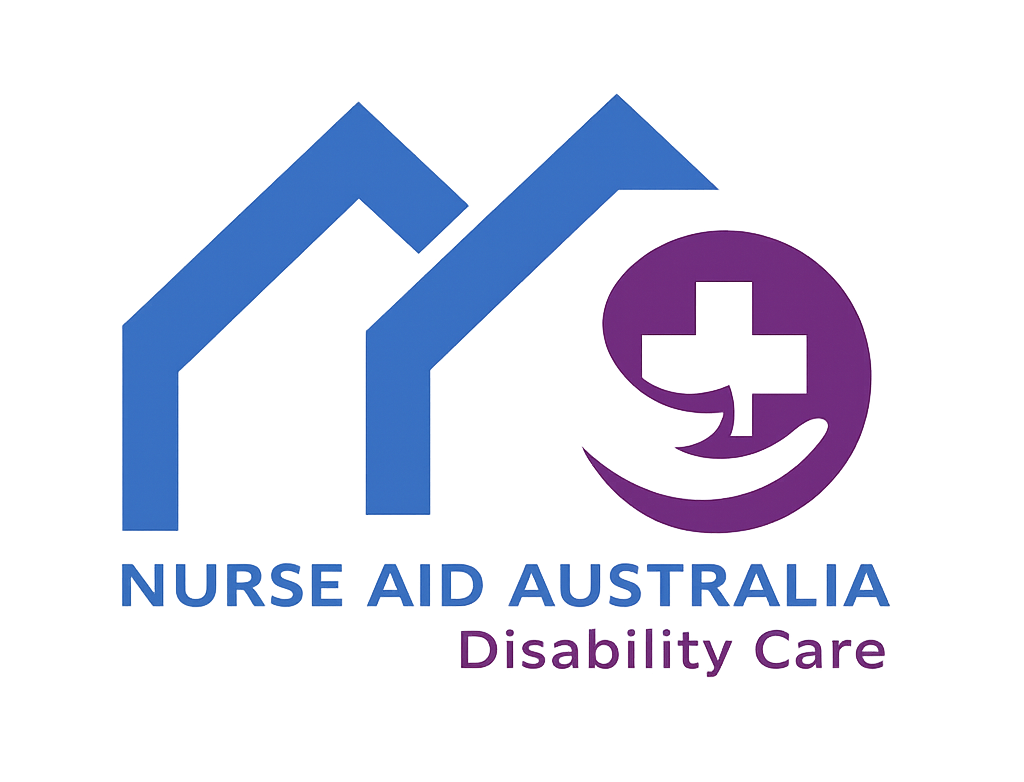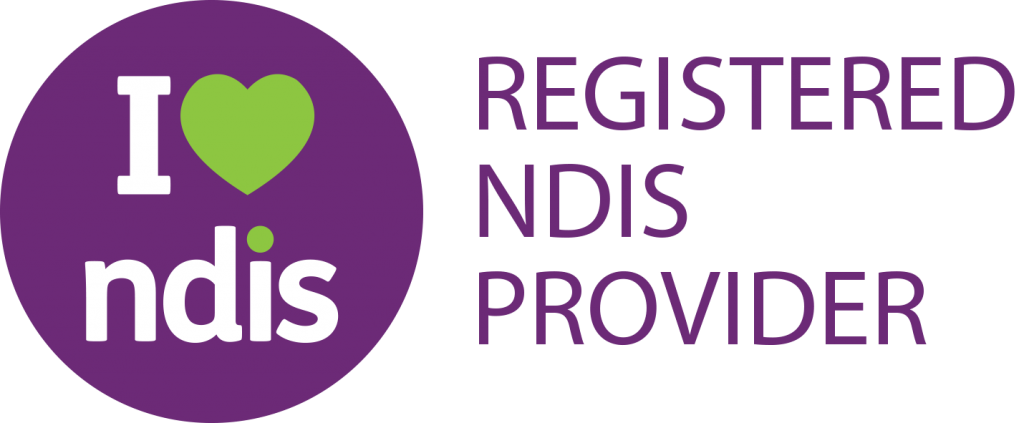Assistive Technologies: NDIS Support Guide
The National Disability Insurance Scheme (NDIS) funds assistive technology to help participants achieve independence and participate actively in their communities. NDIS participants access these funded supports to perform daily living activities that their disability makes difficult or impossible. Understanding how NDIS assistive technology works enables you to maximize your plan benefits and achieve your personal goals.
What Is Assistive Technology in the NDIS?
Assistive technology under the NDIS refers to any device, equipment, or system that helps individuals with disabilities perform tasks more easily or safely. The NDIA defines assistive technology as equipment that fills the gap between a person’s abilities and the tasks they need to perform in daily life.
NDIS funds assistive technology when it meets reasonable and necessary criteria. This means the technology must relate directly to your disability, represent value for money, and effectively support your plan goals. The NDIA assesses each request against these criteria to determine funding eligibility.
Allied health professionals conduct assessments to identify appropriate assistive technology solutions. These qualified AT advisors evaluate your functional capacity, current equipment limitations, and environmental factors to recommend suitable options. Their professional reports provide the evidence NDIA requires for funding decisions.
Types of NDIS-Funded Assistive Technology
Mobility Aids and Equipment
Mobility assistive technology enables NDIS participants to move safely around their homes and communities. These devices range from basic walking aids to Advance wheelchairs with environmental control systems.
Manual wheelchairs cost between $400-2,500, while power wheelchairs range from $3,000-25,000 depending on features and customization requirements. Walking frames, rollators, and mobility scooters provide alternatives for people with different mobility needs and preferences.
Transfer equipment includes slide boards, transfer belts, and mechanical hoists. These aids help participants move safely between surfaces like beds, chairs, and vehicles. Standing frames and standing wheelchairs allow people to change positions throughout the day for health benefits.
Communication Devices and Systems
Communication assistive technology supports NDIS participants who experience speech, language, or hearing difficulties. Speech-generating devices cost $2,000-15,000 and provide voice output for people who cannot speak or have unclear speech.
Hearing assistive technology includes hearing aids ($1,500-8,000 per pair), FM systems, and loop systems. These devices amplify sound and reduce background noise in various environments. Augmentative and alternative communication (AAC) apps on tablets offer flexible, portable communication solutions.
Computer access equipment enables people with physical disabilities to operate computers and mobile devices. Switch-activated devices, eye-gaze systems, and voice recognition software provide alternative input methods for people who cannot use standard keyboards or mice.
Daily Living and Personal Care Aids
Daily living assistive technology helps NDIS participants manage personal care tasks independently. Bathroom aids include shower chairs ($80-300), toilet seat raisers, grab rails, and bath lifts. These devices improve safety and reduce the physical demands of personal hygiene tasks.
Kitchen adaptations enable independent meal preparation and eating. Adaptive utensils, one-handed equipment, jar openers, and height-adjustable surfaces accommodate various physical limitations. Dressing aids like button hooks, zipper pulls, and sock aids help people dress independently.
Smart home technology integrates multiple daily living functions through environmental control systems. Voice-activated lights, door openers, and appliance controls reduce the physical effort required for household tasks.
Health Management and Monitoring
Health management assistive technology helps NDIS participants monitor their wellbeing and manage medical conditions. Medication reminder systems range from simple pill organizers ($20-50) to electronic dispensers with alarms ($200-800).
Pressure care equipment prevents skin breakdown for people who spend long periods in wheelchairs or beds. Pressure-relieving cushions ($200-2,000) and mattresses ($500-8,000) redistribute weight and reduce pressure points.
Monitoring devices track vital signs, blood glucose levels, and other health indicators. Emergency alert systems provide 24-hour access to assistance when needed. These technologies support independent living while maintaining safety and health oversight.
NDIS Funding Categories and Cost Thresholds
Low-Cost Assistive Technology
Low-cost assistive technology includes items under $1,500 that participants can purchase without formal quotes. The NDIA funds these items through Core Supports – Consumables budget when they meet reasonable and necessary criteria.
Participants access low-cost items quickly through their Local Area Coordinator or support coordinator. Examples include non-slip bath mats ($25-80), basic walking sticks ($30-150), and large-button phones ($80-300). These off-the-shelf products require minimal setup and pose low risk when used appropriately.
The simplified approval process for low-cost items recognizes that participants need quick access to basic equipment. Plan managers process payments directly to suppliers, streamlining the purchasing experience for participants and their families.
Mid-Cost Assistive Technology
Mid-cost assistive technology covers items between $1,500-15,000 that require professional assessment before funding approval. The NDIA allocates these funds through Capital Supports budget and requires written evidence demonstrating reasonable and necessary criteria.
Qualified AT advisors conduct comprehensive assessments for mid-cost items. Their reports detail functional requirements, equipment specifications, and expected outcomes. This evidence helps NDIA reviewers understand why specific equipment suits individual participant needs.
Common mid-cost items include standard power wheelchairs ($3,000-12,000), pressure care mattresses ($1,800-8,000), and communication devices ($2,000-10,000). The 28-day approval timeline allows thorough assessment while maintaining reasonable access to needed equipment.
High-Cost Assistive Technology
High-cost assistive technology exceeds $15,000 and involves complex assessment processes. These items often require customization, specialized installation, or extensive user training. The NDIA requires formal quotes and detailed professional reports for all high-cost requests.
Specialist AT assessors evaluate high-cost equipment needs. They consider multiple options, conduct trials when appropriate, and provide comprehensive justification for recommended solutions. Their expertise ensures participants receive appropriate technology that delivers long-term value.
Custom wheelchair systems ($18,000-45,000), environmental control units ($20,000-40,000), and complex communication devices ($16,000-35,000) exemplify high-cost categories. The 50-day approval timeline accommodates thorough review of these significant investments.
Step-by-Step Guide to Accessing NDIS Assistive Technology
Identify Your Assistive Technology Needs
Begin by documenting daily activities that your disability makes difficult or impossible. Review your NDIS plan goals to understand how assistive technology might support your objectives. Consider both current needs and anticipated changes in your functional capacity over time.
Consult with your existing allied health team about potential assistive technology solutions. Occupational therapists, physiotherapists, and speech pathologists bring specialized knowledge about equipment options and their applications. Their clinical experience helps identify realistic and beneficial technology choices.
Engage family members and support workers in needs assessment discussions. They observe your daily challenges and can provide valuable insights about practical solutions. Their input ensures recommended technology fits your lifestyle and support arrangements.
Obtain Professional Assessment
Contact qualified AT advisors to arrange comprehensive assessments. These professionals hold university degrees in relevant fields and possess specific expertise in assistive technology evaluation. NDIS provider registration indicates familiarity with funding processes and requirements.
Prepare for assessment appointments by gathering medical reports, current NDIS plan documentation, and lists of current equipment. Schedule sufficient time for thorough evaluation, including functional testing and environmental assessment. Some assessments require multiple sessions to complete properly.
Professional assessors evaluate your functional capacity, environmental factors, and support arrangements. They conduct equipment trials when possible and provide detailed reports supporting their recommendations. Quality assessments significantly improve funding approval likelihood.
Equipment Selection and Quotes
Work with your AT advisor to select specific equipment models and suppliers. Research NDIS registered providers in your area, comparing their product ranges, service quality, and support offerings. Consider factors like warranty coverage, maintenance services, and staff expertise.
Obtain detailed quotes that specify equipment models, accessories, installation requirements, and training inclusions. Quotes for items over $15,000 must include comprehensive specifications and delivery timelines. Multiple quotes may strengthen applications for expensive or specialized equipment.
Review quotes carefully with your AT advisor and support coordinator. Ensure all necessary components and services appear in quotations. Clarify any uncertainties about equipment specifications, installation procedures, or ongoing support arrangements before submitting applications.
NDIA Review and Decision
Submit complete application packages through your support coordinator or directly via NDIS contact channels. Include professional assessment reports, equipment quotes, medical supporting documentation, and current plan copies. Complete submissions reduce processing delays and information requests.
NDIA reviewers assess applications against reasonable and necessary criteria, considering your disability impact, plan goals, and cost-effectiveness. They may request additional information or clarification about specific aspects of your request. Respond promptly to information requests to maintain approval timelines.
Decision notifications specify approved equipment, funding amounts, and any conditions or restrictions. Approved applications enable immediate equipment procurement through nominated suppliers. Rejected applications include reasons and appeal pathway information.
Purchase and Implementation
Contact approved suppliers to arrange equipment procurement and delivery. Coordinate installation schedules with suppliers and any required allied health professionals. Ensure adequate preparation for equipment arrival, including space preparation and support person availability.
Participate actively in equipment setup, calibration, and user training. Ask questions about operation procedures, safety requirements, and maintenance schedules. Document important information about warranties, service contacts, and troubleshooting procedures.
Schedule follow-up appointments with your AT advisor to assess equipment performance and address any initial concerns. Early intervention resolves minor issues before they become significant problems affecting equipment usage and outcomes.
Professional Support Team for Your AT Journey
Allied health professionals form the foundation of your assistive technology support team. Occupational therapists specialize in daily living activities and equipment that supports independence in self-care, productivity, and leisure. Their assessments identify how assistive technology can bridge functional gaps and support plan goals.
Physiotherapists focus on mobility, strength, and positioning aspects of assistive technology. They assess wheelchair seating requirements, walking aid suitability, and exercise equipment needs. Speech pathologists evaluate communication technology requirements and provide device programming and training services.
Rehabilitation engineers bring technical expertise to complex assistive technology solutions. They design custom equipment modifications, evaluate environmental control systems, and ensure safety compliance for specialized installations.
NDIS Support Coordinators and Planners
Support coordinators guide participants through assistive technology applications and coordinate services across different providers. They maintain detailed knowledge of NDIS processes, funding categories, and documentation requirements. Their advocacy ensures participant voices remain central to decision-making processes.
Plan managers handle financial administration for assistive technology purchases. They process invoices, track budget utilization, and ensure compliance with NDIS pricing arrangements. Their services streamline purchasing processes and reduce administrative burden for participants and families.
Local Area Coordinators support participants who self-manage their NDIS plans. They provide information about assistive technology options and connect participants with appropriate service providers in their communities.
Assistive Technology Providers
NDIS registered providers offer equipment supply, installation, and ongoing support services. Registration demonstrates compliance with NDIS standards for service quality, participant safety, and financial management. Registered providers understand NDIS pricing arrangements and invoicing requirements.
Evaluate potential providers based on their product expertise, service coverage, and customer support quality. Contact existing customers for references and assess provider responsiveness to inquiries. Quality providers invest time in understanding participant needs and recommend appropriate solutions.
Establish clear service agreements covering equipment specifications, installation procedures, training provision, and warranty terms. Document maintenance schedules, service contact information, and escalation procedures for urgent issues.
Common Challenges and Solutions
Application Delays and Documentation Issues
Incomplete documentation causes most application delays. Ensure professional reports address all reasonable and necessary criteria with specific evidence. Include detailed functional assessments, environmental evaluations, and clear outcome predictions.
Missing or inadequate quotes also delay approvals. Work with suppliers to provide comprehensive quotations including all necessary equipment, accessories, installation, and training components. Verify quote accuracy and completeness before submission.
Respond quickly to NDIA information requests. Contact your AT advisor or support coordinator immediately when additional documentation is required. Prompt responses demonstrate engagement and help maintain approval timelines.
Funding Rejections and Appeals
Funding rejections typically result from insufficient evidence of reasonable and necessary criteria. Review rejection reasons carefully with your support team to identify gaps in documentation or assessment. Additional professional opinions may strengthen resubmitted applications.
Internal review processes allow reconsideration of rejected applications within 60 days. Provide new evidence addressing specific rejection reasons rather than resubmitting identical documentation. External appeals through Administrative Appeals Tribunal offer final recourse for disputed decisions.
Consider alternative equipment options if preferred solutions receive repeated rejections. Your AT advisor can recommend different approaches that meet your needs while satisfying NDIA criteria.
Provider and Service Quality Issues
Research providers thoroughly before making purchasing decisions. Contact references, read online reviews, and verify service capabilities. Quality providers invest time understanding participant needs and provide comprehensive pre-purchase consultations.
Document service issues and communicate concerns promptly with providers. Most reputable suppliers work diligently to resolve problems and maintain customer satisfaction. Escalate persistent issues to your support coordinator for assistance.
Report serious safety concerns or unethical practices to NDIS Quality and Safeguards Commission. They investigate provider conduct and take enforcement action when necessary to protect participant interests.
Maintenance, Repairs, and Replacements
Ongoing Maintenance Requirements
Regular maintenance preserves equipment functionality and safety. Follow manufacturer recommendations for cleaning, servicing, and component replacement. Maintain service records documenting maintenance activities and any issues identified.
Understand warranty coverage and maintenance responsibilities. Some maintenance tasks remain participant responsibilities while others fall under supplier or manufacturer warranty coverage. Budget for routine maintenance costs not covered by NDIS funding.
Replacement and Upgrade Processes
Equipment replacement needs arise from normal wear, damage, or changed functional requirements. Contact your support coordinator when replacement becomes necessary. Document equipment condition and functional limitations to support replacement requests.
Provide evidence of changed needs when requesting equipment upgrades. New medical conditions, functional changes, or environmental modifications may justify different equipment specifications. Professional reassessment often supports upgrade applications.
How Nurse Aid Australia Supports Your Assistive Technology Journey
Nurse Aid Australia provides comprehensive assistive technology assessment and support services across metropolitan and regional areas. Our qualified occupational therapists, physiotherapists, and AT specialists conduct thorough evaluations that meet NDIS requirements while focusing on your individual needs and circumstances.
Our assessment process includes functional capacity evaluation, environmental assessment, equipment trials, and detailed reporting. We coordinate with your existing healthcare team to ensure assistive technology recommendations align with your overall care plan and therapeutic goals.
We guide participants through entire application processes from initial assessment through equipment implementation. Our support coordinators liaise directly with NDIA, manage docu
Contact Nurse Aid Australia at 1300 413 663 to discuss your assistive technology needs. Our experienced team provides obligation-free consultations to explore how assistive technology can support your NDIS goals and enhance your independence.
Ready to Take the Next Step?
At Nurse Aid Australia, we’re here to support you in turning your NDIS goals into real-world outcomes. Whether you’re looking to join community activities, improve your social confidence, or access tailored support services—we’re just a click away.
Have questions? Contact our friendly team to discuss how we can help you or your loved ones thrive through the NDIS.
Frequently Asked Questions
How long does the approval process take?
NDIS approval timeframes vary by cost category and application complexity. Low-cost items under $1,500 receive immediate funding when plan budgets allow. Mid-cost items between $1,500-15,000 require up to 28 days for NDIA review. High-cost items over $15,000 take up to 50 days for comprehensive assessment and approval.
Complex applications requiring additional information or specialist consultation may exceed standard timeframes. Submit complete, high-quality applications to minimize delays and information requests.
Can I choose my own equipment supplier?
NDIS participants select their preferred equipment suppliers from registered and unregistered providers. NDIS registered providers understand funding requirements and pricing arrangements, streamlining purchase processes. Unregistered providers require careful attention to invoicing and payment procedures.
Evaluate suppliers based on product expertise, service quality, installation capabilities, and ongoing support. Quality suppliers invest time understanding your needs and provide comprehensive pre-purchase consultations and post-delivery support.
What happens if my assistive technology breaks down?
Contact your equipment supplier immediately when breakdowns occur. Warranty coverage may provide free repairs or replacements depending on breakdown causes and timing. Document problems thoroughly and maintain all service records.
NDIS funding may cover repairs not included under warranty coverage. Contact your support coordinator to discuss repair funding options and temporary equipment solutions while repairs proceed.
How do I know if I’m eligible for high-cost assistive technology?
High-cost assistive technology eligibility depends on functional needs, disability impact, and equipment complexity requirements. Professional AT assessors evaluate whether simpler, less expensive alternatives could meet your needs effectively.
Customization requirements, specialized installation needs, or significant safety considerations typically indicate high-cost categories. Comprehensive professional assessment determines appropriate technology levels for individual circumstances.
Can I trial equipment before purchasing?
Equipment trials help ensure assistive technology meets your needs and preferences before final purchase decisions. Many suppliers offer demonstration units or short-term loans for evaluation purposes. NDIS may fund formal trial periods for complex or expensive equipment.
Discuss trial options with your AT advisor and potential suppliers during assessment processes. Trials identify potential issues and confirm equipment suitability before permanent installation.
What if my needs change over time?
Changing functional needs require equipment reassessment and potential modifications or replacements. Progressive conditions, aging effects, or environmental changes may necessitate different assistive technology solutions.
Contact your AT advisor when significant changes occur in your functional capacity or circumstances. Professional reassessment determines whether equipment modifications, additional items, or complete replacements provide optimal support.
How does assistive technology funding work with other NDIS supports?
Assistive technology funding integrates with other NDIS support categories through coordinated planning and budget allocation. Low-cost items utilize Core Supports – Consumables budgets while mid and high-cost equipment accesses Capital Supports funding.




